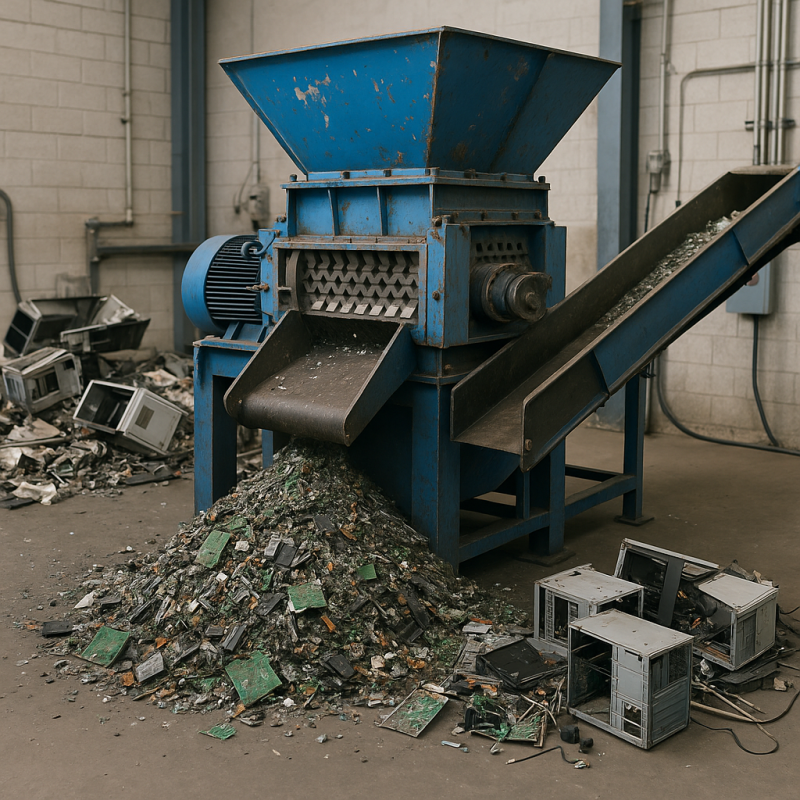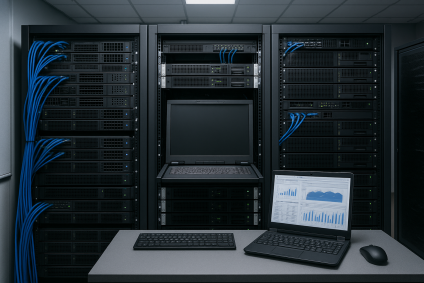Is E-Waste Recycling Actually Hurting the Planet?
For decades, businesses have been told that recycling is the gold standard for sustainability. “Don’t dump it, recycle it,” has been drilled into our collective consciousness. But what if recycling—especially when it comes to electronics and IT equipment—isn’t the green solution we’ve been led to believe? What if, in some cases, recycling is actually hurting the planet more than helping it?
This contrarian perspective isn’t about denying the importance of responsible waste management. Instead, it’s about asking the tough questions: Are we equating recycling with sustainability when, in fact, reuse and buyback programs are far greener options? Let’s dive into this controversial discussion.
Why Do We Assume Recycling = Sustainability?
Recycling has been marketed as a guilt-free way to consume. Drop your old laptop, tape library, or server in the recycling bin, and you’ve done your part for the planet. But that narrative often glosses over the messy reality of e-waste recycling:
- It’s energy-intensive.
- It often involves shipping materials overseas.
- It creates toxic byproducts.
- It destroys potentially reusable equipment.
In other words, just because something is “recycled” doesn’t mean it’s truly sustainable.
🔍 Recycling Myth vs. Reality
| Claim About Recycling | Reality Check |
|---|---|
| “Recycling is always sustainable.” | Recycling is energy-intensive and often dirtier than reuse. |
| “Shredding = security.” | Shredding destroys hardware, not necessarily data. |
| “Recycling saves the planet.” | Without reuse first, recycling wastes embodied carbon and destroys value. |
What’s Wrong With E-Waste Recycling?
Let’s break it down:
- Shredding Destroys Value
Most recyclers run equipment through shredders to strip metals like copper, gold, and aluminum. But in that process, fully functional servers, data tapes, and networking gear are reduced to scrap, losing any chance of reuse. - Energy & Carbon Footprint
The process of shredding, melting, smelting, and chemically treating components requires enormous amounts of energy. The carbon cost of recycling often exceeds the footprint of simply reusing equipment. - Toxic Pollution
Improper e-waste recycling (especially overseas) has been linked to environmental devastation. Heavy metals like mercury and lead often leach into soil and water during crude recycling processes. - False Sense of Accomplishment
Companies check the “green box” by sending equipment for recycling, but in reality, they may be outsourcing pollution to another country while missing a chance to extend the useful life of IT assets.
The Dirty Secrets of E-Waste Recycling
- 80% of U.S. e-waste is shipped overseas to unregulated markets.
- Workers in these regions often use open burning and acid baths to extract metals.
- The result: toxic air, poisoned water supplies, and child labor exposure.
Recycling may look “green” on paper but can devastate communities abroad.
Stop Shredding. Start Reusing.
Every server, tape, and switch you shred could have a second life. Recycling should be last resort, not first step.

Isn’t Reuse Always Better Than Recycling?
Yes—and here’s why. Reuse beats recycling every time because:
- Lower energy demand: Keeping equipment in circulation avoids the massive energy costs of breaking down and remanufacturing.
- Longer lifecycle: Extending the lifespan of IT equipment delays the environmental impact of producing replacements.
- Circular economy alignment: True sustainability means keeping products at their highest utility for as long as possible—not grinding them into scrap.
A reused LTO-8 tape, for example, might serve several more years in an archive, while a shredded tape becomes raw material that must be reprocessed, repackaged, and redistributed—all with new carbon costs.
♻️ Reuse vs. Recycling – ESG Impact Comparison
| Metric | Reuse & Buyback | Recycling (Shredding) |
|---|---|---|
| Carbon Footprint | Low – avoids new manufacturing | High – energy-intensive processes |
| Lifecycle Extension | Yes – equipment re-enters circulation | No – hardware destroyed |
| Data Security | Certified sanitization, auditable | Shredding only, often weak audit trail |
| Financial Return | Companies get paid | Companies often pay recyclers |
| ESG Reporting | Strong – Scope 3 emissions reduced | Shallow – weight-based reporting only |
How Does IT Asset Buyback Work as a Greener Alternative?
Buyback programs flip the script. Instead of destroying equipment, they:
- Evaluate condition & value.
Companies like WeBuyUsedITequipment.net assess whether servers, networking gear, and data tapes can be resold or reused. - Securely sanitize data.
Using NIST 800-88 or DOD-compliant erasure standards ensures sensitive data is permanently erased. - Reintroduce assets into the market.
Functional equipment goes to secondary markets, startups, resellers, or other enterprises that need affordable gear. - Provide financial return.
Instead of paying for recycling, businesses get cash or trade-in credit.
💰 Top 5 Buyback Benefits Over Shredding
- Get Paid, Don’t Pay: Turn old IT gear into cash instead of paying disposal fees.
- Better ESG Story: Report carbon savings and lifecycle extension, not just pounds shredded.
- Higher Compliance: NIST 800-88 erasure provides verifiable proof for auditors.
- Support Circular Economy: Extend asset lifespans and reduce demand for raw material mining.
- Reputation Win: Customers, investors, and regulators prefer real sustainability over greenwashing.
But Don’t Companies Face Compliance Risks If They Reuse Instead of Recycle?
That’s the fear—but it’s outdated. With today’s secure data destruction methods, reuse can actually be safer than shredding.
- Shredding ≠ proof. A shredded hard drive doesn’t prove that data is unrecoverable unless backed by a certified process.
- Sanitization + Chain of Custody = compliance. A documented buyback process with verifiable NIST 800-88 erasure offers stronger audit trails than a recycling certificate alone.
- Auditors want accountability. In many industries (healthcare, finance, government), being able to prove secure sanitization is more valuable than simply shredding assets.
📈 Why Auditors Prefer Reuse Over Recycling
| Audit Requirement | Recycling (Shredding) | Buyback & Reuse |
|---|---|---|
| Chain of Custody | Weak – weight certificates only | Strong – item-level tracking |
| Data Sanitization Proof | Not guaranteed | NIST 800-88 / DOD-certified |
| ESG Documentation | Pounds diverted only | Carbon reduction + lifecycle reporting |
| Financial Transparency | Cost only | Cost savings + revenue return |
What About the ESG Narrative?
Most corporations now report on ESG (Environmental, Social, and Governance) performance. Here’s the uncomfortable truth:
- Recycling is easy to report but shallow.
- Reuse and buyback offer measurable ESG gains.
By reusing IT assets, companies can:
- Reduce Scope 3 emissions.
- Extend the lifecycle of materials.
- Support the secondary market, which provides affordable technology to smaller businesses and developing regions.
Instead of greenwashing with “we recycled X pounds of electronics,” companies can tell a real sustainability story: “We diverted X servers from shredding, extended their lifecycle by Y years, and reduced carbon impact by Z metric tons.”
Isn’t Recycling Necessary Sometimes?
Absolutely. Not every asset can be reused. Equipment that’s damaged, obsolete, or unsafe should be recycled responsibly. But the point is this:
Recycling should be the last resort—not the first step.
The waste hierarchy is clear: reduce → reuse → recycle. Yet in the IT industry, we often skip directly to shredding. That’s not sustainability—that’s laziness dressed up in green language.
Why Is This Message Controversial?
Because it challenges billion-dollar recycling industries and the ESG reports of Fortune 500 companies. Many organizations are invested in the “recycle = green” narrative. Questioning it disrupts comfortable assumptions.
But business leaders serious about sustainability need to rethink the reflex to shred and recycle. The circular economy only works if reuse comes first.
FAQ: Common Questions About E-Waste Recycling vs. Reuse
Q: Isn’t shredding the safest way to destroy data?
A: No. Shredding destroys hardware, but not always data. Residual data can sometimes survive if shredding isn’t precise. Certified erasure provides verifiable data sanitization.
Q: What if no one wants to buy our old equipment?
A: Many markets exist for used IT gear—especially data tapes, servers, and networking hardware. Even if your equipment isn’t state-of-the-art, it may still have value in the secondary market.
Q: Doesn’t recycling reduce landfill waste?
A: Yes, but reuse prevents landfill waste and avoids new manufacturing demand—making it doubly effective.
Q: How do auditors view reuse?
A: Increasingly, auditors prefer documented sanitization over vague recycling certificates. Reuse can be more audit-friendly.
Q: What’s the financial incentive?
A: With buyback, you get paid for your equipment instead of paying recycling fees. It’s greener and cheaper.
Stop Shredding. Start Reusing.
Every server, tape, and switch you shred could have a second life. Recycling should be last resort, not first step.
📈 Big Data Is Growing. Don’t Let Your Old Tape Go to Waste.







